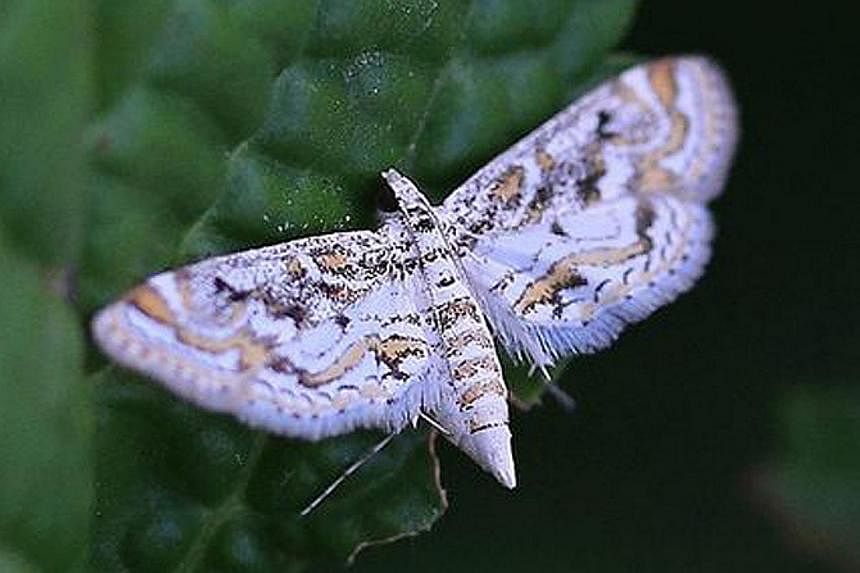An interest group has started a project to catalogue the types of moths in Singapore by asking the public to send in photos of the ones they spot.
The initiative by the Butterfly Interest Group of the Nature Society (Singapore) (NSS) has collected more than 150 submissions since the programme was launched in July.
Of these, 60 out of 85 moth species have been identified.
Mr Anuj Jain, chairman of NSS' Butterfly Interest Group, hopes to create a centralised catalogue through this project.
Moths are insects with four wings belonging to the Lepidoptera order. Even though butterflies and moths belong in the same order, entomologists classify them separately.
"There is currently no field guide for moths in Singapore," said Mr Anuj, who is also an ecologist at the National University of Singapore (NUS).
"If we don't even know what moths are here, how can we expect to conserve them?"
The group hopes to ride the public interest piqued in May when numerous sightings were made of the tropical swallowtail moth, Lyssa zampa.
Netizens posted pictures of the palm-sized, dark-coloured insects seen in places ranging from MRT stations to offices in Raffles Place.
Pictures of moths that are spotted and their locations can be submitted online to the iNaturalist platform, and experts in the group will verify and identify the species.
Experts hope the project will help to keep the numbers of moth species up to date.
The Lee Kong Chian Natural History Museum at NUS houses thousands of moth specimens dating back to at least the 1930s, said its entomologist, Mr Hwang Wei Song, but more could be known about which moth species are still found in Singapore today.
"Compared to their sister group, the butterflies, information on the rarity of moths is far from certain, and every effort to help determine their local abundance to help with conservation planning is worthwhile," said Mr Hwang.
Dr Roger Kendrick, one of the administrators of the project, said adding new data would help to identify trends in a species.
Differences could show how habitats change over time.
"Many moth species have larvae that can eat only leaves from a particular plant," said Dr Kendrick, who is also the director of a Hong Kong-based independent wildlife consultancy, C&R Wildlife. "If that plant has become locally extinct, then the moth goes bye, bye too."
Lepidoptera enthusiast Foo Jit Leang has submitted 16 moth sightings to the website so far.
"Having such a platform makes it more convenient for us," said Mr Foo, a 65-year-old software developer. "Previously, you would have to use online resources to figure out the moths' identity on your own."
For more details, go to https://www.inaturalist.org/projects/singapore-moths


